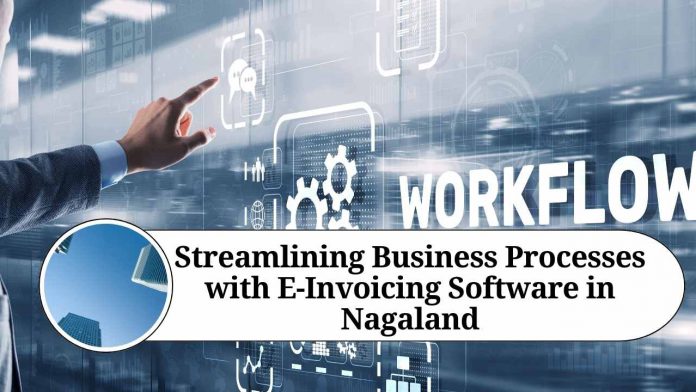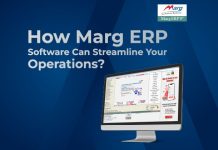In the digital era, where technology is revolutionizing various industries, the world of accounting and invoicing is also witnessing significant transformations. Gone are the days of paper-based invoices and manual record-keeping. With the advent of electronic invoicing (e-invoicing) software, businesses in Nagaland can streamline their financial processes, improve efficiency, and ensure compliance with tax regulations. This blog explores the benefits and features of e-invoicing software in Nagaland, highlighting how it can revolutionize business operations.
What is E-Invoicing Software?
E-invoicing software is a digital solution that automates the invoicing process, enabling businesses to create, send, receive, and manage invoices electronically. It eliminates the need for manual data entry, reduces errors, and accelerates payment cycles. By adopting e-invoicing software, companies in Nagaland can experience seamless integration with their accounting systems, increased accuracy, and enhanced collaboration between stakeholders.
Key Features of E-Invoicing Software
a. Automated Invoicing: E-invoicing software automates the invoice generation process, eliminating the need for manual entry and reducing the chances of errors. It allows businesses to create professional invoices quickly and accurately.
b. Integration Capabilities: Modern e-invoicing software seamlessly integrates with accounting systems, enabling businesses to sync their financial data effortlessly. This integration ensures consistent and up-to-date information across different platforms.
c. Invoice Tracking and Management: E-invoicing software provides comprehensive tracking and management features. It allows businesses to monitor invoice status, track payment dates, and send reminders for overdue invoices. This functionality helps improve cash flow management and reduces payment delays.
d. Tax Compliance: E-invoicing software ensures compliance with tax regulations by automating the inclusion of necessary tax details, such as Goods and Services Tax (GST) in Nagaland. It minimizes the chances of errors, penalties, and disputes related to tax calculations.
e. Data Security: Data security is crucial for businesses. E-invoicing software provides robust security measures, such as encryption and secure data storage, ensuring the confidentiality and integrity of financial information.
Benefits of E-Invoicing Software in Nagaland
a. Enhanced Efficiency: By automating manual tasks and reducing errors, e-invoicing software improves overall efficiency. Businesses can save time, allocate resources effectively, and focus on core operations, leading to increased productivity.
b. Faster Payment Processing: E-invoicing software accelerates the payment process by reducing delays and ensuring timely invoice delivery. With automated reminders, businesses can prompt customers to make payments promptly, resulting in improved cash flow.
c. Cost Savings: Adopting e-invoicing software eliminates the need for printing, postage, and storage of physical invoices. This reduction in paper usage and administrative costs translates into significant savings for businesses in Nagaland.
d. Improved Accuracy: Manual data entry is prone to errors, which can have severe consequences for invoicing and accounting. E-invoicing software minimizes human errors and ensures accurate invoicing and financial records.
e. Enhanced Customer Experience: E-invoicing software allows businesses to provide a seamless and professional experience to their customers. It enables quick invoice delivery, easy payment options, and personalized communication, strengthening customer relationships.
Implementing E-Invoicing Software in Nagaland
To implement e-invoicing software effectively, businesses in Nagaland should consider the following steps:
a. Research and Select a Suitable Solution: Explore different e-invoicing software options available in the market. Consider factors such as ease of use, features, integration capabilities, customer support, and pricing. Select a solution that aligns with your business requirements.
Other Related Blogs: Section 144B Income Tax Act
Frequently Ask Question
Q. What is e-invoicing software?
E-invoicing software is a digital solution that automates the process of creating, sending, receiving, and managing invoices electronically. It eliminates the need for paper-based invoices and manual data entry, streamlining the invoicing process for businesses.
Q. How does e-invoicing software benefits businesses in Nagaland?
E-invoicing software offers several benefits to businesses in Nagaland, including:
Improved efficiency and productivity through automation of manual tasks.
Faster payment processing and improved cash flow management.
Cost savings by eliminating the need for paper, printing, and postage.
Enhanced accuracy in invoicing and financial records.
Seamless integration with accounting systems and easy access to real-time financial data.
Ensuring compliance with tax regulations, such as GST in Nagaland.
Q. Is e-invoicing software suitable for businesses of all sizes in Nagaland?
Yes, e-invoicing software is suitable for businesses of all sizes in Nagaland. Whether you’re a small-scale startup or a large enterprise, e-invoicing software can streamline your invoicing processes and bring efficiency to your financial operations.
Q. How secure is e-invoicing software?
E-invoicing software providers prioritize data security and employ robust security measures to protect sensitive financial information. This includes encryption, secure data storage, and compliance with data protection regulations. However, it is essential to choose a reputable and trusted e-invoicing software provider to ensure the highest level of security.
Q. Can e-invoicing software integrate with existing accounting systems?
Yes, modern e-invoicing software offers integration capabilities, allowing seamless integration with existing accounting systems. This ensures that financial data remains consistent across platforms and eliminates the need for manual data entry.
Q. What are the key features to look for in e-invoicing software?
When selecting e-invoicing software for your business in Nagaland, consider the following key features:
Automated invoicing capabilities to streamline the invoice generation process.
Integration with accounting systems for seamless data synchronization.
Invoice tracking and management functionalities to monitor invoice status and payment dates.
Tax compliance features, including the inclusion of necessary tax details like GST.
Data security measures, such as encryption and secure data storage.
Q. How easy is it to implement e-invoicing software?
Implementing e-invoicing software is generally straightforward, especially with user-friendly solutions available in the market. It typically involves selecting a suitable software provider, customizing the software to fit your business needs, and integrating it with your existing systems. Many software providers offer onboarding assistance and customer support to ensure a smooth implementation process.
Q. Can e-invoicing software be accessed remotely?
Yes, e-invoicing software can be accessed remotely, providing convenience and flexibility for businesses in Nagaland. It enables users to create, send, and manage invoices from anywhere with an internet connection, making it particularly useful for businesses with remote teams or multiple locations.
Q. Can e-invoicing software generate reports and analytics?
Yes, most e-invoicing software includes reporting and analytics features. These functionalities provide insights into invoice status, payment trends, outstanding amounts, and other financial metrics. Generating reports and analytics helps businesses gain a deeper understanding of their invoicing processes and make informed decisions.
Q. How can businesses in Nagaland get started with e-invoicing software?
To get started with e-invoicing software, businesses in Nagaland can follow these steps:
Q. Research and select a suitable e-invoicing software provider.
Customize the software to align with your business requirements.
Integrate the software with your existing accounting systems.
Train your team on how to use the software effectively.




















